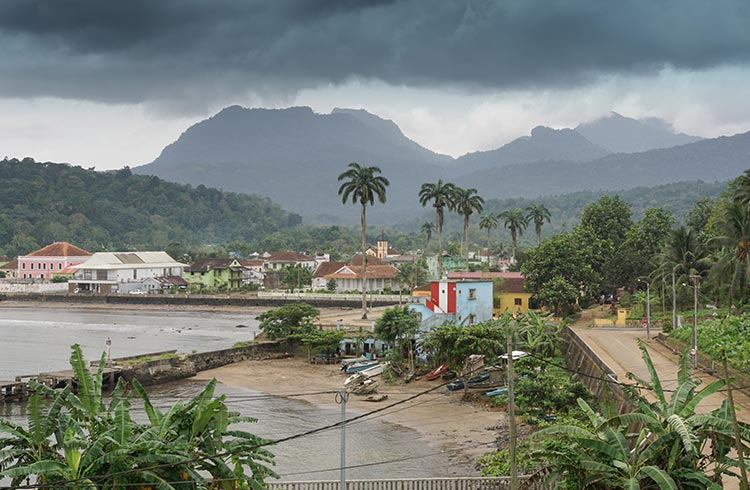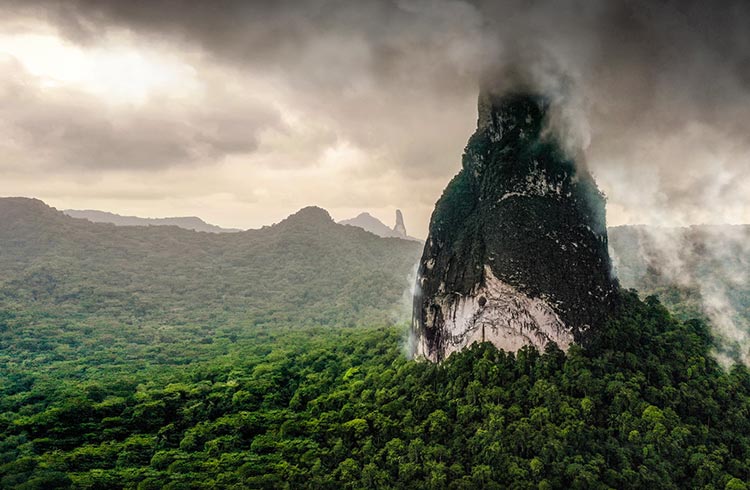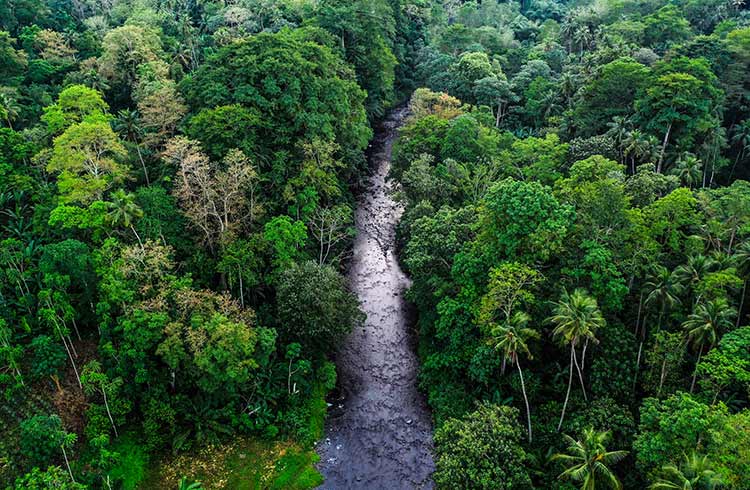Is São Tomé and Príncipe Safe? 5 Travel Safety Tips
Travel writer Aoife O Riordain shares her tips on how to stay safe in São Tomé and Príncipe after a recent trip to the African island nation.
 Photo © Getty Images/Alexander Ludwig / EyeEm
Photo © Getty Images/Alexander Ludwig / EyeEm
The first thing that struck me about São Tomé and Príncipe is how remote it feels, and it is – two craggy volcanic islands marooned in the Gulf of Guinea 155mi (250km) off Africa’s West Coast. With a population of around 206,000, this is Africa’s second smallest nation after The Seychelles, and one of the least visited, with around 30,000 visitors in 2018.
Uninhabited until the 16th century when Portuguese explorers arrived on Príncipe’s shores, the crumbling, former banana, cacao, coffee and sugar cane plantations known as “roças” that dot both the islands, are vestiges of its often-brutal colonial history until it gained independence from Portugal in 1975. Both islands are blanketed in emerald jungle, fringed by beaches and hidden coves of the golden sand variety with peaks like São Tomé’s Cao Grande, an otherworldly granite spike rising 663m (2,175ft) above the jungle.
Having traveled the 86mi (140km) from São Tomé to neighboring Príncipe, a Unesco Biosphere Reserve, it felt like I had left the modern world behind. Against its backdrop of mist-cloaked mountains and luxuriant jungle, turtles nest on its deserted beaches and whales populate the surrounding waters.
The islands’ dazzling biodiversity is another draw, with scores of endemic plants and bird species not found anywhere else on Earth. Tourism is still very much in its infancy here; São Tomé and Príncipe still felt gloriously unspoiled, and there was always a smile and a wave for me.
Learning a few words of Portuguese will greatly enhance any stay here, as English is not widely spoken. Nudging the equator line, life on these islands is slow, in fact, the Santomeans have a word for it, leve leve, or “easy, easy” which is a state of mind that came easily here.
- Crime in São Tomé and Príncipe
- Vaccinations and health tips
- Jungle safety
- Transport safety tips
- Visas for São Tomé and Príncipe
1. Crime in São Tomé and Príncipe
In keeping with its laid-back nature, crime is not something widely experienced by visitors, but exercising common sense should keep you out of trouble. Crimes such as burglary and pick-pocketing are infrequent and serious crimes such as armed robbery or rape, are extremely rare.
Keep your belongings with you at all times and don’t leave valuables unattended – mobile phones are probably the most desirable items for opportunistic thieves.
Taking photographs of the Presidential Palace, military or other government buildings is strictly forbidden.
Same-sex relationships are not illegal, however LGBTQ travelers may face discrimination, and there are no laws against discrimination in place in São Tomé and Príncipe.

2. Vaccinations and health tips for São Tomé and Príncipe
- Since 2014, there haven’t been any deaths from malaria in São Tomé and Príncipe. However, some of the population live with malaria and it is considered a malarial zone by most health authorities. It is advisable that you consult your doctor before travel about taking a course of anti-malarial drugs
- To avoid insect bites, you should always apply insect repellent, ideally one containing 50% DEET, and wear long-sleeved clothing at dawn and dusk to avoid mosquito bites
- Tetanus/Diphtheria, Hepatitis A and typhoid vaccinations should also be up to date
- There are frequent outbreaks of cholera, and, while it’s a small risk for travelers, you should observe strict food and hygiene measures. Don't eat raw salad or vegetables and fruit that can't be peeled, try not to eat undercooked shellfish, shun ice in your drinks and do not drink tap water
- Bring a reusable water bottle to cut down on plastic waste.
3. Jungle safety in São Tomé and Príncipe
Almost 90% of São Tomé and Príncipe is covered in dense jungle and this natural beauty is undoubtedly a huge part of its allure to travelers.
The entire island of Príncipe is a designated Unesco Biosphere Reserve. It’s not advisable to wander into the jungle alone as it is easy to get lost, instead use a local guide.
Make sure you are wearing enclosed footwear with good grip, especially following wet weather, as paths can become slippery.
Stay on prescribed trails and don’t eat any plants, berries or fruits – unless you know exactly what they are.
If you visit beaches where there are pigs (many of the small fishermen’s settlements keep them) keep your shoes on as “matacanha” or jigger fleas can be lurking, attach to your feet and cause itching and infection.

4. Transport safety in São Tomé and Príncipe
São Tomé and Príncipe’s transport infrastructure is basic. There is an international airport with connections to Africa and Lisbon, and boat and ferry services run to and from several West African ports, but the vessels are often in a poor state of repair with low safety standards.
The best advice is to fly internally between the two islands – boats have erratic departure schedules and can be overcrowded with passengers. In 2019, a ship carrying passengers and cargo sank off the coast of Príncipe, resulting in a number of fatalities.
Seats on the small aircraft that operates between São Tomé and Príncipe need to be booked well in advance. During my visit, the plane developed a fault and there was no service for two days – flights did not resume until a replacement could be found.
There are yellow shared taxis and buses on São Tomé, but no other public transport in São Tomé and Príncipe.
The streets in the city of São Tomé are paved, but large potholes are common. Major roads outside of town are also paved, but often in bad repair; pedestrians, cyclists, motorcyclists, and animals can be a major hazard, and small landslides can also occur in rural areas after heavy rainfall.
Beyond the city, there is no street lighting, and drivers are expected to honk the car's horn periodically as a warning signal of their approach.
Only a few miles of improved roads exist on Príncipe, and in wet weather roads can quickly become dangerous and impassable. A four-wheel drive vehicle is advised, and seek local advice before you set off.
In remote areas, especially on Príncipe, drivers often stop to give rides to students who have a long walk to and from school. Road signs are also infrequent outside Santo Antonio, Príncipe’s capital, so, carry a map/download offline maps before you leave to avoid getting lost.
International mobile phone signals generally do not work or are sporadic, so you will need
5. Visas for São Tomé and Príncipe
Those staying less than 15 days in São Tomé and Príncipe can get a visa on arrival at the international airport. If you are staying for longer, apply for a visa before you depart, which you can do online at http://www.smf.st, or if you are booking with a specialist tour operator, they might be able to arrange one.
Related articles
Simple and flexible travel insurance
You can buy at home or while traveling, and claim online from anywhere in the world. With 150+ adventure activities covered and 24/7 emergency assistance.
Get a quote

No Comments